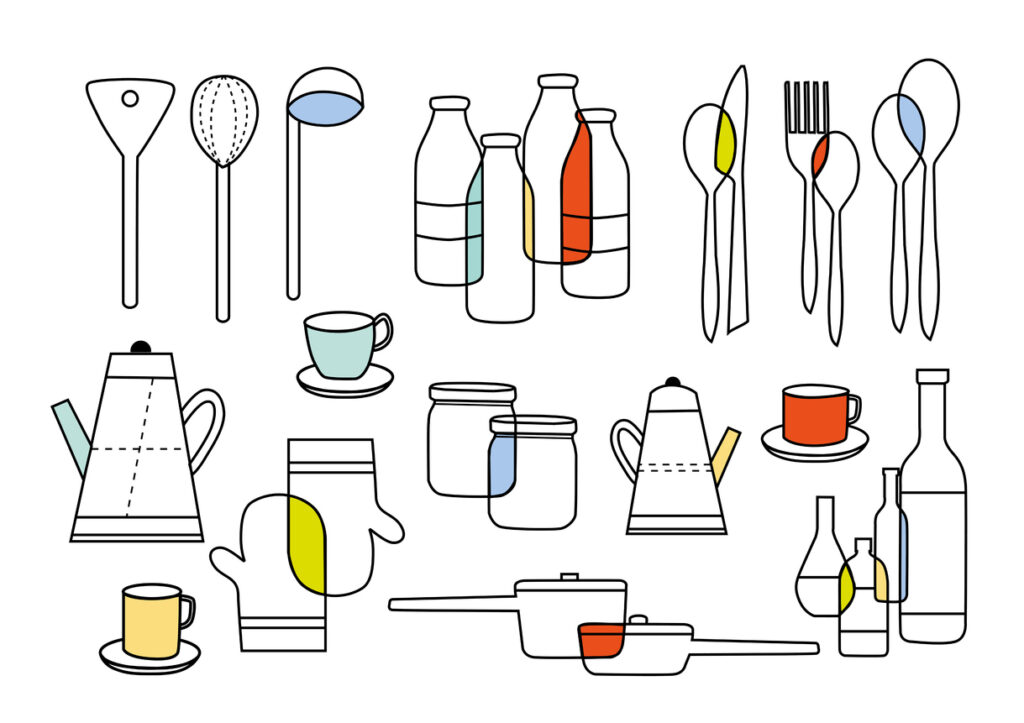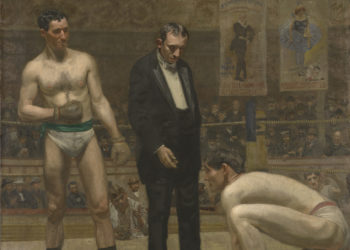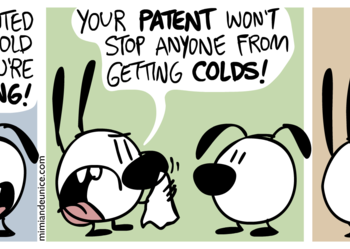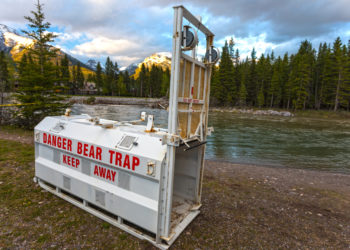Continuing our Kitchen Essentials series of interviews with leaders of infrastructure organizations, today we are hearing from Richard Jefferson, the molecular biologist who is founder and CEO of Cambia, which develops and operates infrastructure services including Biological Open Source (BiOS) and its flagship project, The Lens. The Lens enables exploration, discovery, analysis, and mapping for the records of over 272 million scholarly works, 155 million global patents, and 500 million patent sequences, including the people and institutions that generate this knowledge and the citation graphs and linkages between them.

Please tell us a bit about yourself – your role at The Lens, how you got there, and why you embarked on a career in research infrastructure?
I am a scientist, originally a molecular biologist; I love to invent enabling tools, originally biotechnology, now information goods. Over the last quarter of a century however, I have become a social entrepreneur, working to encourage science to be a more effective service to society.
When I developed a major new biotechnology tool in the mid-80s it opened up global agriculture to biotechnology. Tired of the ‘old boys club’ and the exclusion of my countless colleagues from ‘’the global south’, I decided to send the technology — with all the DNA sequences, the DNA itself, the associated substrates and materials and an in-depth users’ manual to more than 500 laboratories around the world.
This was long before they heard about the work, before I published it and before it was patented by me. The idea — in retrospect both instructive and naive — was that this could foster an explosion of ‘democratized’ problem solving where the tools of biotechnology could be used by any company or cooperative anywhere in the world, to craft locally-relevant solutions to the pressing problems of sustainable agriculture.
Richard Poynder wrote a comprehensive profile of me and this work as a chapter in his book, Basement Interviews: highlighting our work pioneering Open Science in the 1980’s until about 2006, after the formal launch of Biological Open Source (BiOS) project in 2005.
And indeed, while this distribution paradigm was novel, unique, and generated thousands and thousands of scholarly works and gratifying citations, it had the opposite effect to that I’d intended.
Turns out it doesn’t matter how cool the science is, or how ‘open’ it is. This is not the rate limiting step in achieving public outcomes. What matters is, first that the knowledge generated is relevant to solving a particular problem, and that the constellation of different skills and capabilities that are needed to harness the knowledge and reduce it to practice — to create new products, and stimulate new practices are clear, considered, coordinated, and respected.
I knew nothing then about how hard it is to make, market, distribute, and support a successful product, whether it’s a new seed variety, a new soil management practice, an anti-viral vaccine, a medical device, or a solar panel.
But the big private sector active in ag biotech did understand this and had been developing the suite of capabilities necessary to make products. This wasn’t ‘evil’ — it was just how business operates. They had taken the time and exercised the discipline to map the innovation space and align the germplasm, the IP rights, the regulatory experience, the distribution channels: all of it.
What they lacked was the ability to genetically engineer a soybean. Which I gave to them; it landed on their desk, as it had everyone else’s. Open. And they used it, it worked well, and it gained them first-mover advantage in a competitive market, changing the trajectory of industrial agriculture for decades.
If only the public sector had considered the landscape that could turn the breathless gushiness of science boosters into anything impactful. But they didn’t. Or if they’d seen how fair competition and alternative products could enable diverse opportunities and prevent monopoly and its abuses.
Wow. Not the outcome I had desired. And I realized that if we claim to care about Outcomes, the ‘system’ in which innovation happens must be rendered transparent for meaningful choices to be made — in both public policy or private enterprise. It was not. It was and still is, stunningly opaque.
To deal with this situation, I founded Cambia in the late 80’s and pioneered a biological open science initiative for two decades, which ultimately led to the Lens becoming an increasingly prominent project from its inception in 2000, as Patent Lens. But it could never have happened without internal leadership and contributions from extraordinary scientists, scholars, business and policy advisors, and patent professionals. Our vision then and now is to increase the public good impact of research by illuminating the constellation of knowledge and capabilities needed to shape and deliver outcomes, and help map productive pathways and avoid blockages and capture.
While the Lens is indeed ‘research infrastructure’, we think of it as infrastructure to optimize the societal value of research. We call it STEPS Infrastructure: Science and Technology Enabled Problem Solving. We don’t want ‘research’ — and its commissioning and funding — to continue as- is. We want the entire enterprise to be much more effective at understanding real-world priorities and delivering real-world outcomes of value to everyone, not just academics. Does this mean we’re favoring ‘applied research’ highly? That’s not for us to say. We can say that we must generate a clear multi-domain understanding of what lies between need and research on one hand, and research and uptake of that new knowledge to create an improved world. If we don’t, we certainly can’t get the mix right.
Our role, simply put, is to enable and empower faster, more effective delivery of publicly valuable outcomes informed by reliable evidence, research, and scholarship.
The Lens — informed by almost 40 years of pioneering the first iterations of ‘‘Open Science’ — is the result of that experience, and the clear need to visualize the context of science and to be active in changing its culture to improve outcomes
How is The Lens sustained financially?
We have been funded largely by a who’s-who mix of leading granting bodies: Rockefeller, Gates, Moore, Welcome, Lemelson, some government programs, including the Norwegian ministry of foreign affairs, as well as broad, inclusive licensing to the private sector of our biotechnology inventions.
We work towards advancing Science- and Technology-Enabled Problem Solving (STEPS), by encouraging exploration: building bridges between the norms, knowledge, practices and cultures of business, law, policy, investment, research, and civil society to improve outcomes.
I started practicing what is now called ‘Open Science’ (I will elaborate below) in 1986/87 while another Richard (Stallman) in another Cambridge was advancing his vision for collaborative and open software engineering for shared and organically improving operating systems.
To try to expand and inform these ideas in an international arena, after leaving the Plant Breeding Institute I joined the Food and Agriculture Organization of the United Nations as their first Molecular Biologist, a move that provided countless new perceptions of the inadequacies of the innovation system, and hints of how we could improve it.
Later, we developed a fully inclusive tiered price, universal access policy to my patented biotechnology technology to help fund creation of Cambia. This helped fund, together with investment from Rockefeller Foundation, a knowledge platform to allow anyone, anywhere, at no cost to explore patents that could inform, enable, block, or capture the use of knowledge (i.e., conversion of science into outcomes). PatentLens ( precursor of The Lens) was then used to author and create landscapes of the state of play in a field of innovation. This informed design of new strategies to work around capture of publicly-funded science by large corporations with extensive portfolios (Biological Open Source), an example here.
Our journey of experimentation and social and scientific activism for more and different actors to be part of the ecosystem of problem solving, led to what was a stunning realization: No one in academia did anything to broaden the deliverability of their science: nor was there any incentive to care and act.
So not being dissuaded,we invented a technology — Transbacter — that worked around literally thousands of patents, published in Nature, developed an online platform, ‘Bioforge’ so that anyone could help improve it and share it, and a wonderful collaborative non-assertion tool and licensing framework to keep it open. Thousands of (largely) academic scientists flocked to the site, perhaps seduced by the easy rhetoric of ‘open’. But is seemed that no one really cared if Monsanto’s patented technology could effectively capture all their research, and no one helped improve the system past ‘kernel’ phase. So after a couple of years of frustration, we shut down Bioforge, and focused on making the Lens a global platform for ‘innovation cartography’.
The public sector comprehensively lacked capability or the incentives to visualize potential partners or blockers in all parts of the innovation system, to clarify opportunities, thus exposing incentives, to reduce risks to achieving sticky engagement and investment and to navigate and respond to shifting trajectories. We called this mapping PORTS.
Our empirical conclusion is that little really changes until institutions change, and to do so, incentives for them and their staff and their business decisions had to be shifted. That means they must adopt and use a platform the illuminates the ‘innovation maps’.
What do you like most and least about working in research infrastructure?
Most? Being unapologetically and uncompromisingly purpose-driven with our vision on commons failures, the challenges that face the world, not just the scientists; having unique perspectives, and a driving vision. Critical to this is the joy of working with the extraordinary people in our institution and the early adopters that come to see that vision – beyond the confines of their guilds..
Least? Enduring the tribalism and conservative behavior — largely from the public sector — while we as a species and society are in such crisis. The self-righteous virtue-signaling and intensely competitive actors who do not seem to seek solutions to real problems, but only to promulgate their own ideologies and self interest is maddening and takes the oxygen out of thoughtful practice change for social good. “Open’ has become a disappointing jargony term that is applied to so much activity now, without clarity or discipline as to who – really – are the beneficiaries. It’s become a cult, with the excoriation of anyone and any institution that thinks we must broaden the definitions to save the planet and our dysfunctional societies.
Also? Dealing with governments, foundations, universities that simply do not have the institutional ‘courage’ nor awareness of how coordinating diverse contributors is both the rate-limiting step and the barrier to entry to equitable engagement in solving critical problems.
I cannot emphasize enough, it’s not about ‘more research is required’ or ‘more research funding’, or more ‘open access’ or more ‘open science’. These are not the limiting factor in solving problems, and can aggravate inequities and bring new costs, and the collapse of confidence.
The limiting factor is understanding the problems to be solved — through respectful listening and consultation with those who need solutions — then working through the implications of not just what ‘science’ is needed, but what partnerships are needed to advance and test solutions in the real world. The real problem can be described as ‘structural and systemic’.
As societies, we’ve never ‘designed’ an innovation system. We have accreted our current structure allowing (even encouraging) huge inefficiencies, rent-seeking, and opacities that generally benefit incumbents.
To make a robust change in this will require clear maps of the knowledge, the innovation actors, and the capabilities in each domain of problem solving.
That’s our ‘North Star’, not simply serving individual academics, institutions, patent lawyers, government policy groups, etc. They’re important parts of solutions, but it’s only when these diverse skills and capabilities are coordinated and enduringly incentivized — within their institutions — that we get effective solutions to the challenges of the commons. And this will only happen when the actions are informed by evidence but inspired by imagination. That last line to us is seminal when it comes to priority setting with ‘AI’.
Based on your own experiences, what advice would you give someone starting, or thinking of starting, a career in research infrastructure?
Our civilization and our supportive ecosystem are in crisis, and we have no time to mess around, So my advice is to be focused on desired outcomes from the outset. ‘Open ‘X’ ’ is not an outcome, however virtuous it may seem to the unthoughtful. Do not limit yourself to the guild of practice that captures your imagination and your attention, makes you feel virtuous, and defines your focus, and then retroactively shoe-horn your justifications into doing that thing. Do the thing that is needed for civilization and societies to become better, sustainable, and more fair. And do what’s urgently needed for our supportive ecosystem — biological, social and economic — to be the bellwether for that shift. And be prepared to make many humbling mistakes and pick yourself up and re-think your strategy.
What sort of infrastructure does The Lens provide, and who are your users?
We have been around for a long time, coming up on a quarter of a century: learning, building, listening, growing, and improving. We have been up and serving the innovation community well before Scopus was commercially launched.
We currently serve a rich linked web experience of about 270M scholarly works (including Journal articles, Conference Proceedings, Book and much more) , with over 70 metadata fields, over 154M patent documents, representing about 105 countries, and nearly 500M biological sequences extracted from the global patent corpus, and a facility — PatSeq that allows users to explore the patent status of any sequence obtained through research.
We are becoming a turnkey replacement for Scopus, WoS, Dimensions, and other newer ‘open’ initiatives; those that do not seek to broaden the context in which research sits. In the IP space, we offer a nimble and much cheaper alternative to Derwent, Lexis, PatSnap, and others with a fully open-data platform — a rich user-experience that allows customized analytics and full sharing of results. We expect the global ‘community’ of research can save — in the aggregate – almost a billion dollars a year using Lens.
Critically, we respect the resource of the world’s non-English speaking innovators (i.e., *most* of them) and currently have 13 non-English languages in our interface, and will be working towards a comprehensive polylingual resource.
To realize our social mission we need to displace many of the incumbents: closed, expensive, surveilled, oligopolistic entities (despite their “open” talk) that have eagerly embraced AI, whereas we trust in expertise, empathy, and exploration. We also choose to respect the innovation of businesses as a key part of turning knowledge into outcomes, and integrate this knowledge in our platform with over two decades of experience.
How is The Lens sustained financially?
We license toolkits that all Institutions need to manage, visualize, assess and advance their agendas, and provide bulk or API forms of data that encourage in-house autonomy in decision making if that is desired. These institutions include research funders, policy makers, businesses, investors, civil society and their supportive services.
We started long ago with funding from The Rockefeller Foundation, which was deeply concerned that the willful ignorance of the public sector of the challenges the global patent practices presented to their ambition to share biotechnology for agriculture fairly and equitably. We supplemented this with revenue from our own universal access biotechnology patent licensing program. This was followed by multiple grants from The BIll & Melinda Gates Foundation, The Gordon and Betty Moore Foundation, Wellcome Trust, the Lemelson Foundation, and others, including some governments.
However in the last few years we’ve been operating increasingly from earned revenue from what we call the Lens Equitable Access Program (LEAP), a tiered guaranteed-access for institutions — both non-profit and for-profit — to toolkits that specifically deal with the needs of institutions, including large collections of both scholarly and patent works, professional workspaces, dynamic queries and alerts, embedded analytics and graphics, powerful reporting and mapping capabilities, and customizable metrics, APIs, and bulk data,.
This now supports not only our continued operations, but allows us to offer to all people everywhere comprehensive web access to The Lens, with no account, no cost, no ads, no surveillance, and no tracking.
This year we have achieved revenue positive, having grown 20-30% year over year for three consecutive years
This April we received a major grant from the Gordon and Betty Moore Foundation to scale our initiative towards becoming a default global platform, and to enable me to step aside to explore and share the science that I shelved, and the lessons we have learned about the innovation system. This may involve passing the Lens project to a new, energetic, visionary and capable mission-congruent institution through acquisition, or simply spinning out the Lens and hiring a great new CEO and leader, hopefully providing a fresh generational, geographical and/or gender perspective in scaling.
As the leader( of a research infrastructure organization, what do you think are the biggest opportunities we’ve not yet realized as a community — and what’s stopping us?
Joining and intentionally serving the world outside of research. To make a product or create a practice change in human behavior requires many capabilities; and most of these are associated with institutions. We must move from metrics to maps, and map what these capabilities are, who has them, where they are, what they aspire to, how they can find persistent incentives to act. The biggest opportunity is to understand the global innovation system, through a lens of effective and inclusive problem solving, and to restructure our mapping of opportunities with responsibility to use scholarship and research to effect rapid (!) change. It is a total switch. In 22 years of running The Lens, and its predecessor, few academics have *any* interest in literature that is outside the guild.
Looking at your own organization, what are you most proud of, and what keeps you awake at night?
I’m proud of the persistence of vision, the extraordinary colleagues, and our willingness to pivot from what doesn’t work to what does.
And of course I am proud of the quality and power of The Lens that is now reaching millions of users in almost every country of the world
What keeps me up at night: ensuring that the social mission of Lens/Cambia is embedded in a practical, prosperous and ethical business model. If this is achieved, there will be no substantial reason for a successor — whether a new CEO or an Institutional Acquirer/Steward — to re-visit the mission.
What impact has/does/will AI have on The Lens?
AI is in so many ways, more likely to make our job harder, not easier. We do not seek to provide answers, we seek to empower and enable explorers and builders and change-makers.
The ‘search’ paradigm has perhaps made people more passive and disengaged by converting mapping, exploring, and proactivity and participation into a simple ‘ask and answer’ action that does not build or build upon human intentionality, does not harness the extraordinary insight of deep expertise, does not surprise, does not build bridges of shared ambitions, and crucially of empathy.
We feel the best thing in science is not data, but human intentionality; creating insights that are contextually rich and often unpredictable at the outset. This is exploration.
If you ‘search’ for a thing, the ‘best’ outcome is expected to be: ‘found it’. And in so doing you don’t take the journey — filled with lessons, heartbreak, uplift and surprise — that is necessary for us as a species to meet the David Greybeard imperative that Jane Goodall described so compellingly as a feature of our evolutionary condition..
So we don’t think of ourselves as a ‘search site, whether patents or scholarly works, or funders, or policy. We aspire rather to encourage exploration to reinforce creativity, community, responsible problem solving, partnerships, and action well beyond the silos of academia and to allow government and private investors to map credible pathways to delivery.
This is embodied in the beautiful French verb ‘FAIRE’. Which is also a critical extension of the open data acronym: Findable, Accessible, Interoperable and Reuseable, which is great, as far as it goes. But we insist on adding the final E that makes it FAIRE: ENABLING. If the data doesn’t enable non-data-people to make better decisions and to act, it’s not as interesting to us. We strive to build linkages between groups, knowledge, institutions, disciplines that add ‘enabling’ action or innovation through the data on our platform. We think just FAIR isn’t very FAIR. FAIRE — the melding of doing and making — is a better premise for us. And this is not a trainable AI algorithm (or something)
What changes do you think we’ll see in terms of the overall research infrastructure over the next five to ten years, and how will they impact the kinds of roles you’ll be hiring for at The Lens?
The extraordinary progress towards comprehensive reusable metadata will help enormously. We started our journey at The Lens on the largest (de facto) non-copyrighted body of knowledge in the world, the global patent system. We were able to spend many years learning the craft of working with ‘open’ data, with generating performant full-text indexing and searching, wrestling and harmonizing with myriad forms and timelines of evolution of knowledge artifacts. Patents are uniquely able to inform, constrain, enable, mislead, all at once. And patents are dynamic knowledge artifacts that – like scholarly works – have at their core human action and institutional incentives.
I expect the biggest change will be the realization by others that the human element and the ability to create a robust human-centred experience that lies outside the guilds of science, or law, for instance, will be the touchstone for progress. Data science must empower non-data scientists to engage, add their rich knowledge and context, focus and inform decisions through insight and empathy.



